Carving, in various media, has always been a much-admired form of decoration throughout the Islamic world. Craftsmen lavished special care on wood, which in many areas was very scarce. In addition to a shortage of timber, woodworkers have often operated in climates that cause warping and shrinkage. They developed an unrivalled expertise, combining different types of wood with other precious materials, including ivory and mother-of-pearl. While in most cultures wood has been used for sculptural works, in Islam it is a canvas for two-dimensional creativity. Craftsmen rendered geometric and calligraphic forms with the same sophistication that they brought to manuscript illumination or tile making. Wood also provided a physical core for the unrelated art of lacquerware, taken to exceptional levels of artistry in Iran.

Boxes were an essential storage item in the centuries before hanging wardrobes were widely used. In the Islamic world, they served many purposes and came in a wide variety of forms. The IAMM collection includes examples from different regions, all of which share the Muslim woodworker’s profound understanding of the materials that he hewed. Intricacy of design is a common feature, although each region had its own special characteristics. Ottoman craftsmen were masters of inlay in mother-of-pearl and tortoiseshell; in India, it was more likely to be ivory that provided the finishing touch.
Wood also served a vital purpose in the construction and ornamentation of buildings. Some of the most outstanding features of a mosque are derived from wood. The minbar is one of the larger items, along with the mashrabiya wooden screens found in private dwellings as well as mosques. Qur’an boxes are another essential type of Islamic woodwork, along with one of the most distinctive of all woodwork shapes: the rehal. These Qur’an stands are the embodiment of Islamic design, being practical and yet decorative in an understated manner.

The virtuosity of Muslim woodcarvers created a legacy that was prized in more than just the Islamic world. Their skills were sought by European princes and Popes. Centuries after Spain had ceased to be a part of Islam, Spanish craftsmen were reproducing the designs of a bygone Islamic era. Once again, it was boxes that were the main preoccupation. These continued to use the intricate patterns of the Islamic past and frequently went so far as to include inscriptions such as “There is no god but Allah”.
Closely related to woodwork is ivory. This was not only incorporated into wood, but also acted as a base material in its own right. Some of the finest extant carvings are from Moorish Spain, although ivory was used throughout the Islamic world. Boxes once again make a prominent showing – on a somewhat smaller scale than artefacts from the woodworker’s atelier. The same applies to lacquerware, which became one of the great arts of Iran. During the Safavid and Qajar periods, miniature paintings with a lacquer finish found their highest expression, usually applied to book covers, mirror cases and, of course, boxes.
The versatility of wood led to many types of usage and it is not only used for large objects but also for the smaller objects such as Quran boxes, trunks, rehal, printing blocks and even combs.














